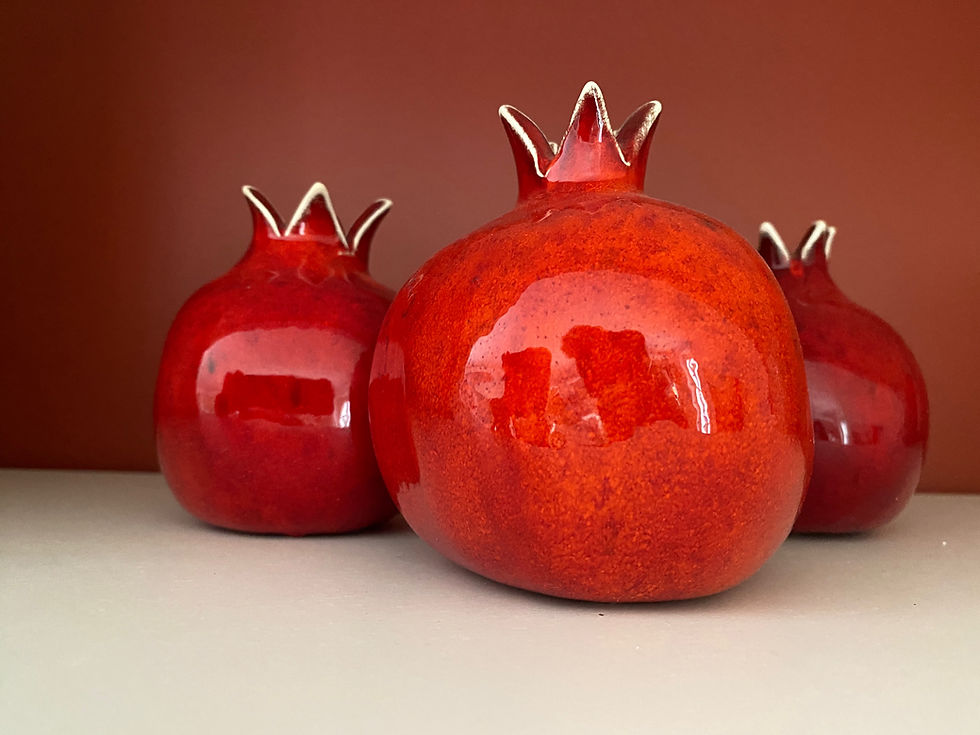A Different Advent
- The Rev. Christopher W. Whiteman
- Nov 25, 2022
- 4 min read
Updated: Aug 15, 2023

Dear friends,
Tomorrow is the beginning of our new liturgical year: the First Sunday of Advent. But what exactly is this season of Advent? The traditions of the church seem unclear for this particular season. I am sure we are all familiar with the Advent wreath, but many of us have witnessed changes to this season in our lifetime. For example, the most widespread traditional liturgical color for Advent in the west was violet, but now, blue has become a popular color. To make things more confusing, we at Trinity maintain both traditions using blue in the main church and violet in the chapel. This uncertain blending of ways of being feels at the same time both very Anglican and very befuddled.
The season of Advent first and foremost is the time we prepare for the advent or the coming of Christ. We often think of this in terms of Christmas as we purchase Advent calendars from our favorite chocolatiers or candy makers, opening one minuscule door for each day before Christmas. And while this season certainly is about preparing for that historical advent of Christ, we are also simultaneously preparing for two other advents of Christ. In a twelfth century Advent sermon, St. Bernard of Clairvaux preached that in this season we are preparing for three advents of Christ: the nativity, the coming of Christ into our lives now, and the future coming of Christ as king and judge. I think the task of trying to simultaneously accomplish three goals, albeit interrelated goals, is what leads to confusion in exactly what Advent is.
In our common liturgical practice, Advent has at times felt like a watered down Lent. With overtones of repentance and sometimes terrifying eschatological visions, the impulse to emphasize penitence makes sense. In the twentieth century, this practice was carefully questioned and a shift to a different kind of Advent was advocated. Part of this change was recovering localized liturgical practices, such as the use of blue instead of violet from the Use of Sarum which is the liturgical traditions developed at Salisbury Cathedral and employed throughout medieval England until the sixteenth century. This change visually differentiates the seasons of Advent and Lent and informs us that these two seasons are distinct, concerning different matters.
As part of the shift, the season of Advent transformed into more of a time of quietness and reflection than one of penitence and repentance. Frequently we avoid the words most associated with Lent and instead advocate for prolonged silences in our services, more subdued music, and spoken texts instead of chanting. This sort of contemplative Advent is a wonderful contrast to the hustle and bustle of December: the endless shopping, the arduous preparations, and the multitude of holiday parties. It reminds us that we as Christians have a deeper purpose at this time of the year as we prepare for the coming of Jesus and it creates a more capacious experience of the sacred when we feel so restricted by all that needs to get done.
While this kind of Advent is a beautiful way to deepen our relationship with God, this year while praying about our life together, speaking with various members of our community, and dreaming with the liturgical stakeholders, we thought that perhaps a season of Advent that is neither a penitential mini-Lent nor a contemplative, quiet practice might be more of what we need. Over the past two and a half years we have had plenty of time for contemplation and quietness. As we were sequestered in our homes, cut off from being physically present, we had to find connection in those quieter moments and in those more contemplative ways. Then as we regathered in person, the joy of Sundays was muted by the cautions demands the pandemic placed on us. Perhaps, quietness and contemplation are not what we need on Sunday mornings at this moment in time.
The ancient Advent prayer of the Church is the Aramaic word, "maranatha," which means, "Our Lord, come!" As we join in this two thousand year old prayer, there is joy to be found this season of Advent. There is joy in the nativity, there is joy in the coming of Christ into the everydayness of our lives, and there is joy in the hope that Christ will come again to establish the kingdom where every tear will be wiped away. The three comings of Christ should inspire within us a upswelling of joy that flows out of our hearts and is expressed through our worship. If we need anything this year, we need this joy of Christ's three advents.
The decision to emphasize joy this season of Advent means a few changes in our liturgical practice this year. We will not sing the Trisagion as we normally do. Instead we will lift our voices in a Song of the Wilderness excerpted from the book of Isaiah. We will joyfully proclaim our anticipation of Christ's coming in our opening acclamation, our prayers at the lighting the Advent wreath, and in the singing of the Gospel Tract. We will fervently pray together, "Maranatha," in the prayers of the people. Our prayer is that this Advent may be a continuation of the joy we feel when gathered together in the presence of God and that we may truly experience the fullness of Christ's advents in our worship, in our individual lives, and in our community.
In Christ,









Comments